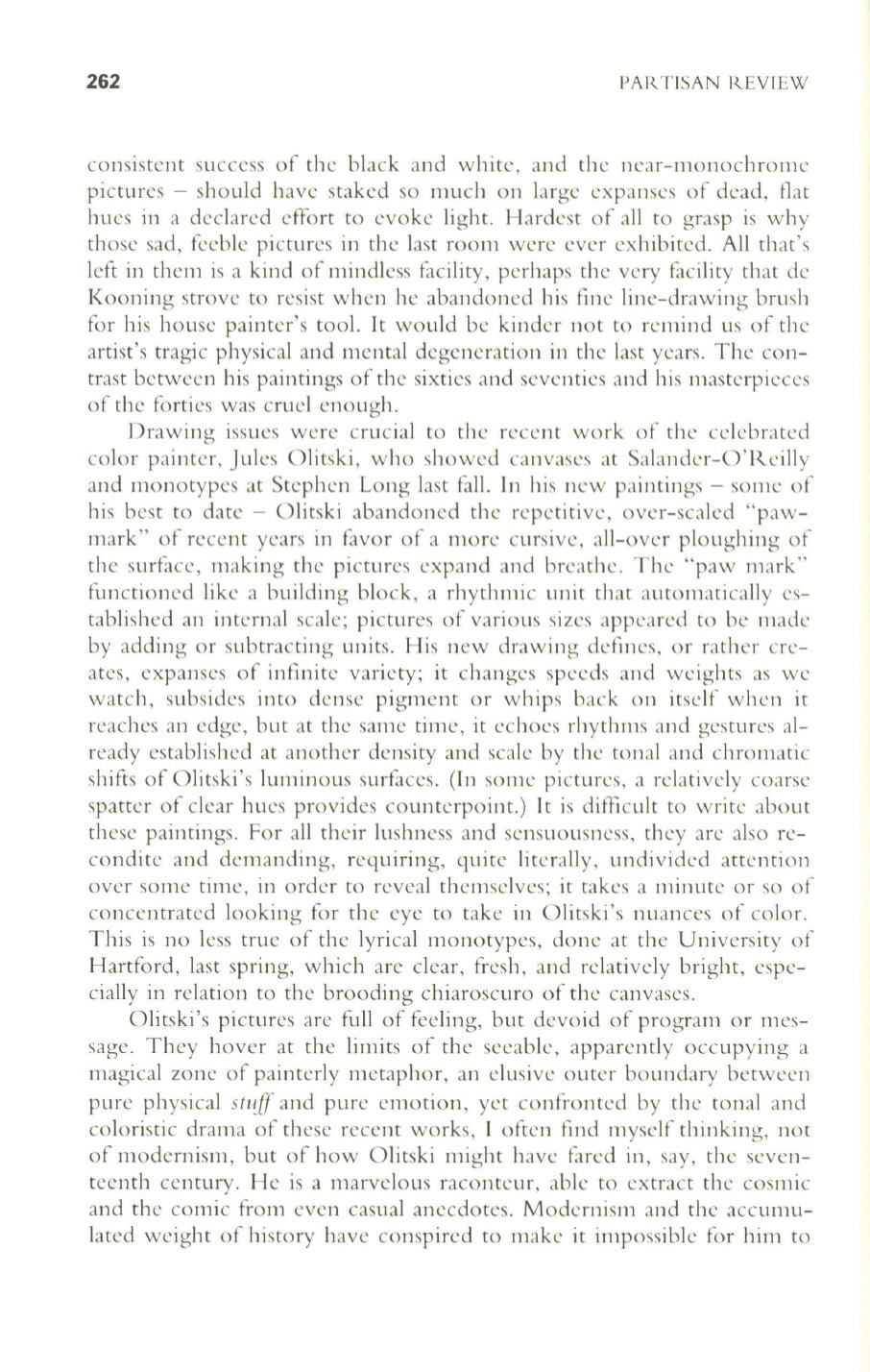
262
PARTISAN R.EVIEW
consistent su ccess of the black and white, and the ncar-monochrome
pictures - should have staked so much on large expanses of dead, fl at
hues in a declared effort to
evoke
light. Hardest of all to grasp is why
those sad, feeble pictures in the last room were ever exhibited. All that's
left in them is a kind of mindless facility, perhaps the very facility that de
Kooning strove to resist when he abandoned his fine line-drawing brush
for his house painter's tool.
It
would be kinder not to remind us of the
artist's tragic physical and mental degeneration in the last years. The con–
trast between his paintings of the sixties and seventies and his masterpieces
of the forties was cruel enough.
Drawing issues were crucial to the recent work of the celebrated
color painter, Jules Olitski, who showed canvases at Salander-O'Reilly
and monotypes at Stephen Long last fall.
In
his new paintings - some of
his best to date - Olitski abandoned the repetitive , over-scaled " paw–
mark" of recent years in favor of a more cursive, all-over ploughing of
the surface, making the pictures expand and breathe. The "paw mark "
functioned like a building block, a rhythmic unit that automatically es–
tablished an internal scale; pictures of various sizes appeared to be made
by adding or subtracting units. His new drawing defines, or rather cre–
ates, expanses of infinite variety; it changes speeds and weights as we
watch, subsides into dense pigment or whips back on itself when it
reaches an edge, but at the same time, it echoes rhythms and gestures al–
ready established at another density and scale by the tonal and chromatic
shifts of Olitski's luminous surfaces. (In some pictures, a relatively coarse
spatter of clear hues provides counterpoint.) It is difficult to write about
these paintings. For all their lushness and sensuousness, they arc also re–
condite and demanding, requiring, quite literally, undivided attention
over some time , in order to reveal themselves; it takes a minute or so of
concentrated looking for the eye to take in O litski's nuances of color.
This is no less true of the lyrica l monotypes, done at the University of
Hartford, last spring, which arc clear, fresh, and relatively bright, espe–
cially in relation to the brooding ch iaroscuro of the canvases.
Olitski 's pictures arc full of feeling , but devoid of program or n1CS–
sage . They hover at the limits of the seeable, apparently occupying a
magical zone of painterly metaphor, an elusive outer boundary between
pure physical
stili!
and pure emotion, yet confronted by the tonal and
coloristic drama of these recent works , I often find myself thinking, not
of modernism , but of how Olitski might have fared in, say, the seven–
teenth century. He is a marvelous raconteur, able to extract the cosmic
and the comic from even casual anecdotes. Modernism and the accumu–
lated weight of history have conspired to make it impossible for him to


